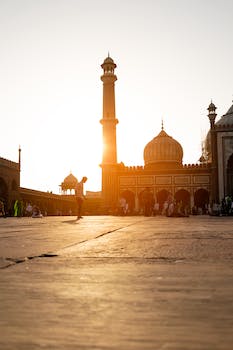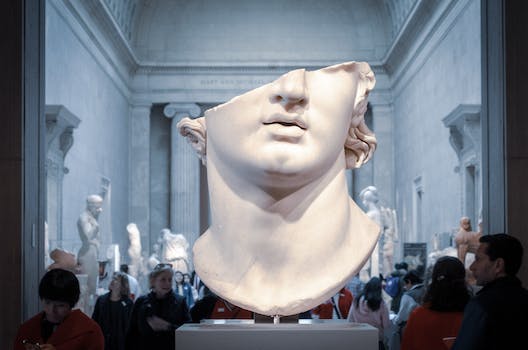-
Table of Contents
- Exploring the Islamic Architecture of Spain: A Look at the Grandeur of the Alhambra Palace
- Exploring the Islamic Influence on Spanish Cuisine: A Taste of the Moorish Legacy
- Exploring the Islamic Art of Spain: From the Great Mosque of Cordoba to the Alhambra
- Exploring the Islamic Legacy of Spain: From the Great Mosque of Seville to the Medina of Granada
- Q&A
“Discover the Rich Heritage of Spain’s Islamic Past: From Majestic Palaces to Timeless Medinas!”
Exploring Spain’s Islamic history is a fascinating journey through time. From the fabled palaces of the Moorish rulers to the ancient medinas of the Islamic cities, Spain’s Islamic history is a rich and vibrant tapestry of culture and tradition. Spanning centuries, this history is filled with stories of conquest, trade, and religious tolerance. From the Great Mosque of Cordoba to the Alhambra Palace in Granada, Spain’s Islamic history is a testament to the power of faith and the beauty of architecture. Join us as we explore the many facets of Spain’s Islamic history, from its grand palaces to its ancient medinas.
Exploring the Islamic Architecture of Spain: A Look at the Grandeur of the Alhambra Palace

The Alhambra Palace in Granada, Spain is a stunning example of Islamic architecture. Built in the 13th century, this palace is a testament to the grandeur of Islamic art and design. From its intricate stonework to its lush gardens, the Alhambra Palace is a sight to behold.
The Alhambra Palace was built by the Nasrid dynasty, a Moorish dynasty that ruled in the region from 1238 to 1492. The palace was constructed as a fortress and a royal residence, and it was designed to be a symbol of the power and wealth of the Nasrid dynasty. The palace is made up of four main sections: the Alcazaba, the Medina, the Palacios Nazaríes, and the Generalife.
The Alcazaba is the oldest part of the palace and was built as a fortress. It is made up of two walls, one inner and one outer, and is surrounded by a moat. The walls are decorated with intricate stonework and are topped with towers. Inside the walls, there are several courtyards and gardens.
The Medina is the residential area of the palace and is made up of several buildings, including the Palacios Nazaríes. This area is where the Nasrid rulers lived and conducted their business. The Palacios Nazaríes is the most impressive part of the Medina and is made up of several buildings, including the Hall of the Ambassadors, the Hall of the Kings, and the Hall of the Abencerrajes. These buildings are decorated with intricate stonework, colorful tiles, and beautiful arches.
The Generalife is the garden area of the palace and is made up of lush gardens, fountains, and pools. The gardens are filled with fragrant flowers and trees, and the fountains are decorated with intricate stonework. The Generalife is a peaceful oasis in the midst of the bustling palace.
The Alhambra Palace is a stunning example of Islamic architecture. From its intricate stonework to its lush gardens, the palace is a testament to the grandeur of Islamic art and design. Whether you’re looking for a peaceful oasis or a glimpse into the past, the Alhambra Palace is a must-see for anyone visiting Granada.
Exploring the Islamic Influence on Spanish Cuisine: A Taste of the Moorish Legacy
The Moorish legacy is alive and well in Spanish cuisine. From the use of spices to the incorporation of sweet and savory flavors, the influence of Islamic culture on Spanish cooking is undeniable.
For centuries, the Moors occupied much of the Iberian Peninsula, bringing with them a wealth of culinary knowledge. This knowledge was then blended with the local ingredients and cooking techniques of the region, creating a unique and flavorful cuisine.
One of the most notable aspects of Moorish cuisine is the use of spices. Spices such as cumin, coriander, saffron, and cinnamon are used to add flavor and depth to dishes. These spices are often combined with sweet and savory flavors, such as honey, almonds, and olives, to create complex and delicious dishes.
The Moors also introduced a variety of cooking techniques to the region. For example, they popularized the use of clay pots for slow-cooking stews and soups. This method of cooking is still used today in many Spanish dishes.
The Moorish influence can also be seen in the use of rice and couscous. These grains were introduced to the region by the Moors and are now staples in Spanish cuisine. Rice dishes such as paella and arroz con pollo are popular throughout the country.
The Moorish influence on Spanish cuisine is also evident in the use of sweet and savory flavors. Dishes such as pastel de carne (meat pie) and pastel de almendras (almond cake) are popular desserts that combine sweet and savory flavors.
The Moorish legacy is alive and well in Spanish cuisine. From the use of spices to the incorporation of sweet and savory flavors, the influence of Islamic culture on Spanish cooking is undeniable. Whether you’re enjoying a traditional paella or a modern take on a Moorish dish, you can be sure that you’re tasting a bit of history.
Exploring the Islamic Art of Spain: From the Great Mosque of Cordoba to the Alhambra
Exploring the Islamic Art of Spain is a fascinating journey through time. From the Great Mosque of Cordoba to the Alhambra, the Islamic art of Spain is a testament to the creativity and skill of the Muslim artisans who lived in the region centuries ago.
The Great Mosque of Cordoba is one of the most iconic examples of Islamic art in Spain. Built in the 8th century, the mosque is a stunning example of Moorish architecture, with its intricate arches, domes, and columns. Inside, the mosque is decorated with intricate geometric patterns and colorful tiles. The mosque is a reminder of the great Islamic civilization that once flourished in Spain.
The Alhambra is another example of Islamic art in Spain. Located in Granada, the Alhambra is a palace complex built in the 14th century. The palace is decorated with intricate carvings, mosaics, and tiles. The Alhambra is a stunning example of Islamic art, with its intricate designs and vibrant colors.
The Islamic art of Spain is a testament to the creativity and skill of the Muslim artisans who lived in the region centuries ago. From the Great Mosque of Cordoba to the Alhambra, these works of art are a reminder of the great Islamic civilization that once flourished in Spain.
Exploring the Islamic Legacy of Spain: From the Great Mosque of Seville to the Medina of Granada
Exploring the Islamic Legacy of Spain is an exciting journey through the country’s rich history. From the Great Mosque of Seville to the Medina of Granada, the Islamic legacy of Spain is a fascinating one.
The Great Mosque of Seville is one of the most iconic monuments of Islamic Spain. Built in the 12th century, it is the largest surviving mosque from the Islamic period in Spain. The mosque is a stunning example of Moorish architecture, with its intricate geometric designs and ornate arches. Inside, visitors can admire the beautiful mosaics and marble columns.
The Medina of Granada is another important Islamic site in Spain. This ancient city was once the capital of the Nasrid dynasty, and it is home to some of the most impressive Islamic monuments in the country. The Alhambra Palace is the most famous of these monuments, and it is a stunning example of Islamic architecture. The palace is filled with intricate carvings, colorful mosaics, and beautiful gardens.
The Islamic legacy of Spain is also evident in its cuisine. Dishes such as paella, gazpacho, and tapas are all derived from the Moorish influence. The use of spices such as saffron, cumin, and paprika are also a reminder of the Islamic influence on Spanish cuisine.
Exploring the Islamic legacy of Spain is a journey through the country’s rich history. From the Great Mosque of Seville to the Medina of Granada, visitors can experience the beauty and grandeur of Islamic Spain. Whether you’re interested in architecture, cuisine, or culture, the Islamic legacy of Spain is sure to leave a lasting impression.
Q&A
1. What is the Islamic history of Spain?
The Islamic history of Spain dates back to the 8th century when the Umayyad Caliphate conquered the Iberian Peninsula. During this period, Islamic culture and architecture flourished, leaving behind a rich legacy of monuments, palaces, and medinas. The Islamic presence in Spain lasted until the late 15th century when the Christian Reconquista was completed.
2. What are some of the most famous Islamic monuments in Spain?
Some of the most famous Islamic monuments in Spain include the Alhambra Palace in Granada, the Mezquita in Cordoba, the Giralda in Seville, and the Alcazaba in Malaga. These monuments are renowned for their intricate architecture and beautiful gardens.
3. What is a medina?
A medina is an old walled city, typically found in North African and Middle Eastern countries. In Spain, medinas were built by the Moors during the Islamic period and are characterized by narrow streets, small squares, and traditional architecture.
4. What is the best way to explore Spain’s Islamic history?
The best way to explore Spain’s Islamic history is to visit some of the most famous monuments and medinas. You can also take guided tours of the monuments and medinas, or visit local museums to learn more about the history and culture of the Islamic period.Exploring Spain’s Islamic history is a fascinating journey through time. From the fabled palaces of the Moorish rulers to the ancient medinas of the Islamic cities, Spain’s Islamic history is a rich and vibrant tapestry of culture and tradition. From the architecture to the cuisine, Spain’s Islamic history is a testament to the lasting influence of the Islamic world on the Iberian Peninsula. Whether you are a history buff or simply looking for a unique cultural experience, exploring Spain’s Islamic history is sure to be an unforgettable experience.
![]()









